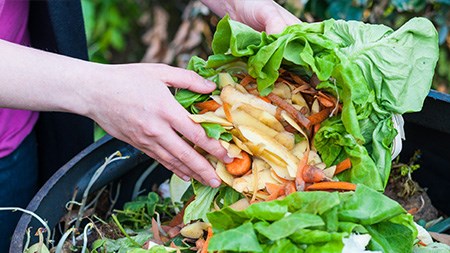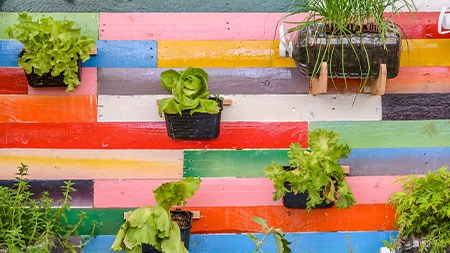A simple way to look after our planet is to create your own composting system for kitchen and garden waste.
In these times where water is tight and our planet needs looking after, it makes great sense to save in every way we can. And simple one way is to have your own composting system that uses kitchen and garden waste to create nutrients for your own backyard.
The good news is that gone are the days of a messy heap in some corner of a sprawling property. There are a wide variety of composting choices that range from easy-to-rotate shop-bought composters to trendy options made from pallets, milk crates, railway sleepers and the like. A quick google will throw up many design ideas and help tailor the system to best suit individual needs. The composting itself, in the meantime, is simple too.
You’ll need:
A container for compost or a place for a compost heap. It can be as simple as a spot on the ground, bricked up or cordoned off with chicken wire, or as fun as three milk crates or wooden boxes – that similarly can be turned and mixed when necessary. Whether it’s a heap or a box, it will need good ventilation at the bottom and on the sides.
To start
Choose a warm or semi-shady spot – a compost heap needs heat to get working.
Begin with a layer of small twigs and branches to help create ventilation, and then continue with alternate layers – each about 10 cm deep, of “green” and “brown” waste.
After a few layers a compost activator such as manure, bone meal, diluted seaweed fertiliser or a commercial product can be added to speed up decomposition, but this is not absolutely necessary.
Keep the heap moist (water the top and feed the hose into the centre) but make sure it doesn’t become wet and soggy (as this leads to slime). Turn (and aerate) with a garden fork after a month the first time, and thereafter about once every two weeks, taking the decomposing material from the middle of the heap and substituting with material from the outside. In a few months, your finished product should be a dark, crumbly soil that smells like fresh earth.
What to add
Your compost will only be as good as the ingredients you add and the best compost is made with kitchen scraps, leaves and woody material cut into small pieces.
Green waste can include grass clippings, green leaves, fruit and vegetable peels, teabags, coffee grounds, egg shells, dead flowers and weeds (if they haven’t gone to seed).
Brown waste can include shredded newspaper, wood chips, wood ash and charcoal, dead leaves, twigs and branches, dry grass and vacuum dust.
What not to add
Oil, meat, fish or dairy – they tend to attract unwanted pests.
Pet faeces – the pathogens don’t break down.
Diseased or insect-infested plants – they’ll spread the disease to the rest of your garden.
Chemicals or plants that have been treated with chemicals.
Handy tip
Keep a small container that can be emptied once a day– with a lid – in the kitchen for green scraps, so you don’t have to go out to the compost heap every time you have organic waste.



